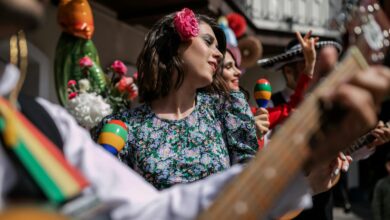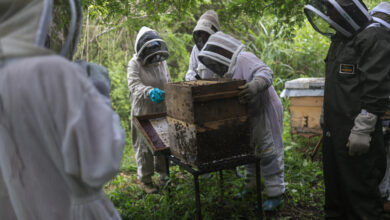How are women in music doing?
According to a recent study by the Annenberg Inclusion Initiative at the University of Southern California, despite some gains, underrepresentation in the field is still a huge deal.

Woman singing / Photo: Pexels – Reference image
The Woman Post | Luisa Fernanda Báez Toro
Listen to this article
Leer en español: ¿Cómo van las mujeres en la música?
This is the third year in which the Annenberg Inclusion Initiative, at the University of Southern California, has presented a report in which representation for women in music is tracked.
As read on Variety, to present their results, they analyzed 800 popular songs on the Billboard Hot 100 year, from 2012 to 2019, as well as gender for eight years of Grammy nominations.
According to Forbes, the study funded by Spotify found that while 21.7% of artists were women, they only represent a 12.5% of songwriters. For example, Nicki Minaj, the top female songwriter, has 19 credits compared to the top male songwriter Max Martin’s 43 credits.
Also, as read on Refinery 29, women in pop music are doing best with a 36.1% share of the music charts. However, women in alternative rock comprised only 11% of tracks, which shows a 8.1 to 1 gender imbalance.
The study highlights the fact that women´s contributions to this field are at least being recognized in Grammy nominations: since 2013, female Grammy nominees have at least doubled, says the study.
To achieve this, the Grammy has invited more women and people of colour to join the voting body and made sure that the review committees have a 50/50 gender split.
Also read: These were the winners of the SAG Awards
However, as read on Los Angeles Times, four out of five Grammy nominees in the categories of record, album, song, new artist and non-classical producer are still male.
“Eleven men are setting the norm for lyrics in the 800 most popular songs. That’s astounding. To really understand the perspectives of people from a variety of different backgrounds, it’s so important to get artists to bring new voices to the table”, said lead author Dr. Stacy Smith.
The study also found that there is an extremely low percent of female producers: “the music industry has virtually erased female producers, particularly women of color, from the popular charts,” she added.
She also highlighted the fact that in 2019, over half of the female artists on the popular charts were women of colour, is very different to what happens in the film industry.
According to Variety, the percentage of black female directors was 16.8% in 2019, a dip from 2018’s high of 21.4%.
“As producers fill a leading creative role, it’s essential to ensure that women from all backgrounds are being considered and hired throughout the industry. Moreover, the industry itself must continue to expand its commitment to representing the voices and talent of women in all aspects of the business”, concluded Smith.
She also added that industry members need to question their biases, create a culture of belonging and support existing efforts to increase inclusion in music.




